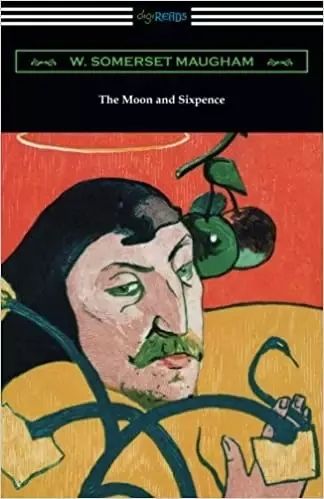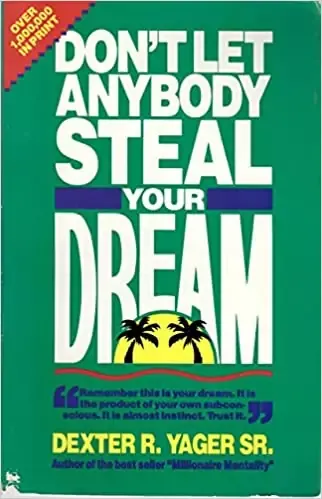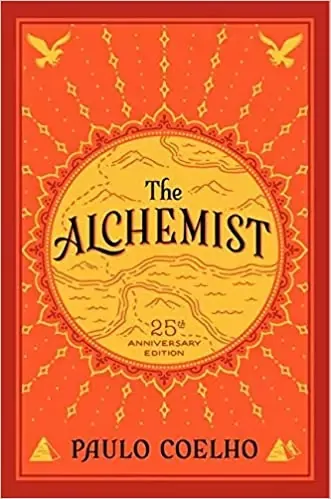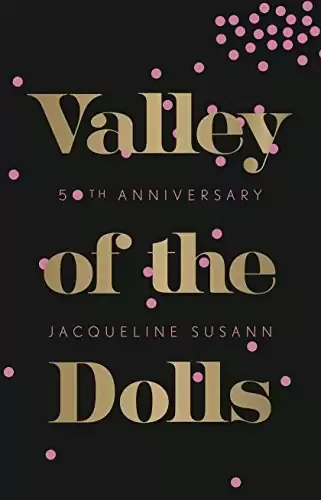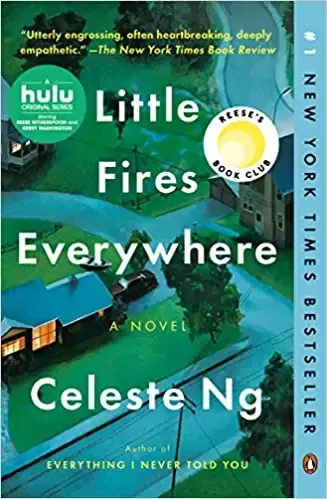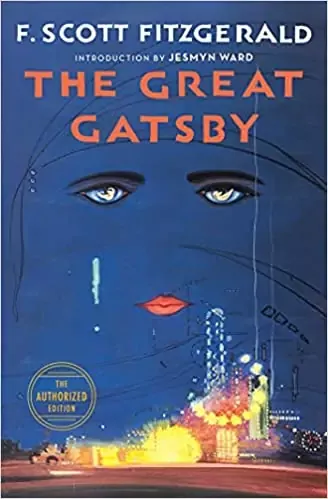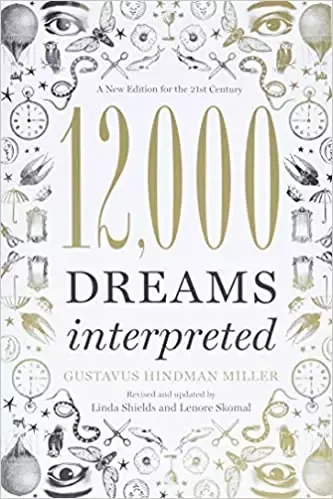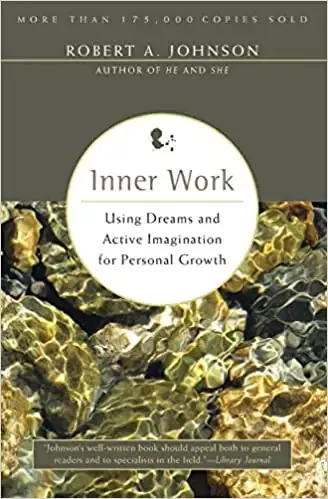Today we will share The 10 Best Books About Dreams You Need on Your Shelf. There is a sentence in Peking University’s famous graduation micro-film "Starry Sky Diary": "It is not reality that supports dreams, but dreams support your reality."
This article, "Reading and Thinking" editor, brings the 10 best books about dreams, namely, Moon and Sixpence, don’t let anyone steal your dreams, dreams are still necessary, in case they come true, I have a dream, shepherd boy’s fantasy journey, buy a ferry ticket to Antarctica, lonely novelist, Skin, the world never owes everyone who works hard, innocent farewell, little fire, etc. Let's take a look.
Dreams have always been with us since we were young! But in this busy metropolis, do we seem to have forgotten anything...? Today we recommend the 10 best books about dreams. I hope you can regain your dreams and work hard. Dreams can not be achieved, but we can't live without dreams!
Even when I was young, I often thought about the huge proposition of life. If you compare life to an endless desert in which we are in it, then the dream should be buried in the sand and waiting for your own treasure.
If you don’t look for it, you may be able to rely on the oasis, on the stars, and on the company. The camel continued to live, but with the desire to chase dreams, he could plant a precious seed in the soil in his heart, and it would naturally bear fruit over time.
The 10 Best Books About Dreams You Need on Your Shelf
The top 10 best books about dreams are mainly recommended by "Reading and Thinking" based on world-renowned inspirational literature, as well as novels and practical literary works that highlight dreams at home and abroad, and refer to the sales of related books, the number of best-selling countries, and the influence of major book websites.
If there is no dream in life, what is the difference between it and salted fish? Here to recommend books based on dreams to everyone, let’s take a look!
1. The Moon and Sixpence
by W. Somerset Maugham
"The Moon and Sixpence" is a novel written by British novelist William Somerset Maugham, written in 1919. The work uses the life of the French impressionist painter Paul Gauguin as the material.
It describes an originally ordinary London stockbroker Strickland, who suddenly fell into the magic of art, abandoning his wife and son, and abandoning what others seem to be wealthy.
To live a happy life, I went to Tahiti in the South Pacific and used a round pen to compose my glorious life and pour the value of life into the gorgeous canvas.
Reading and reading, the end is unexpected. However, if you think about it, there is nothing you can continue to write down. A stockbroker who had lived a good life abandoned everything he had (property, work, wife, and children) overnight, and went to Paris to study painting in isolation.
Every painting is not for sale to obtain financial resources or recognition of reputation, but simply "must paint" and express oneself through paintings. This pure state is both enviable and unattainable.
Too many people in the world (including themselves), are living their own lives ordinary and pursuing the so-called happy life. There are too many things that can't be given up, and there are few things that you really love.
The novel reminds me of the "Death Poetry Society" I read when I was in college. The former is the pursuit of painting and beauty after middle age, and the latter is the pursuit of poetry and beauty when youth is overflowing. The stages of life are different, but pure love and desperate courage are touchin'.
2. Don't Let Anybody Steal Your Dream
by Dexter Yager
"Don’t let anybody steal your dreams!" by Dexter Yager. He has influenced millions of readers with his frank, sincere, compassionate, and hopeful desire for others to succeed. To the half a million business people who listen to his speech every year, he is "Mr. Motivation."
For those millionaires, entrepreneurs, national bankers, and entertainment celebrities who admire him, he is one of the few people whose accomplishments match the advice provided. When it comes to having wealth, Jaeger is an actor.
The book has nine parts, including don’t let anyone steal your dreams, don’t try, do it, get along with the winners, goals: our stepping stones, to be successful, not to be complainers, to build a good self-image, don’t let your tongue get caught, the woman behind the man.
The book can develop your qualities as a successful entrepreneur, from a visionary to a hard-working person, and then a freelance entrepreneur; from a person who overcomes fear to a person who seeks educated and educated people, and then from pioneering life to establishing a path Your own sincere character fighter. These traditional principles are the basis for the success of all undertakings.
What we have achieved and where we are today are the result of dreams coming true. No one can deprive us of our dreams, and no one can prevent the dreams we have worked hard for from coming true. People who have lost their dreams have to face sorrow. Their lives are full of endless hesitation, emptiness, and lack, and their personal lives will stagnate. Don’t let anybody steal your dreams!
3. I Have a Dream
by Dr. Martin Luther King Jr.
"I Have a Dream" is a famous speech delivered by Martin Luther King at the Lincoln Memorial in Washington on August 28, 1963. The content is mainly about the equality of black people, which has a great influence on the United States and the world.
Martin Luther King was a warrior who fought for racial freedom. He used his life to realize the civil rights of blacks in the United States. His "I Have a Dream" became the most famous dream-catching literary work. Editor Maigoo suggests listening to the original sound of this speech, you will not be moved by the emotion of fighting for your dreams.
The author of this book is trying to tell you that there is always a world you can't think of, and he did it perfectly. In most cases, you will have surprises without turning a page. Life is full of such paradoxes. Always unable to sleep, always awake from dreams. In the fragments of dreams, the impossible becomes possible, and meaninglessness makes meaning.
4. The Alchemist
by Paulo Coelho
"The Alchemist" is a novel written by Brazilian writer Paulo Coelho, first published in 1988. "The Alchemist" is a fable with a strong religious mysticism about pursuing dreams and perfecting life.
Since its publication in 1988, the novel has been sold in more than 160 countries, ranked No. 1 on the best-selling list in more than 20 countries, won 33 international awards, and has been translated into 68 languages.
It is the most translated novel among the works of living writers today. , With sales of more than 65 million copies worldwide, is the best-selling Portuguese novel in history.
"The Alchemist" is the representative work of Paul Coelho, a famous contemporary Brazilian writer with worldwide influence. The work describes the Spanish shepherd boy Santiago, who had the same dream twice in succession, dreaming that he could find a group of hidden treasures near the Egyptian pyramids.
In order to pursue his dream, the boy sold his flock and traveled across the sea to Africa and across the Sahara Desert. Later, under the guidance and help of an alchemy soil that could turn lead into gold, he overcame various difficulties and finally saw the pyramid.
Although no treasure was found, he realized the real treasure. The works are full of strong symbolic colors, which enlightens people that if they want to realize their dreams, they need to go through an arduous process, which requires courage, wisdom, perseverance, and testing. Western critics hailed this book as a modern classic that will affect readers' hearts for a lifetime.
Paulo Coelho has studied alchemy for eleven years and has been exploring its symbolic language and practical experience. To write the book "The Alchemist", he even went to the pyramids of Egypt and the Sahara Desert to investigate the origin of Yuan Jing and its main codes. The mystery of Yuanjing attracted the hearts and minds of many people in the Middle Ages, and it is still being practiced today.
5. Valley of the Dolls
by Jacqueline Susann
"Valley of the Dolls" by author Jacqueline Susan (US), is a growth epic of friendship and life. The novel tells the story of three girls who grew up in the collision of dreams and reality. On the huge and prosperous stage of destiny in New York, three fledgling young girls grow up in the collision of dreams and reality.
They cherish each other, experience happiness and misunderstandings, and eventually reach the same goal through different routes. It doesn't matter whether they are right or wrong. All of them are fighting secretly for their dreams and dignity. "Valley of the Dolls" and "Gone with the Wind" "Kill a Mockingbird" Leguinness's three best-selling novels worldwide
Annie, an independent girl, kind, and firm, is a devout believer in love. The man who exposed the British temperament that broke into her life in the summer has the mystery of the true love of her life trapped.
Jennifer, with all her beauty, can't get rid of the shadow of the family. From the ignorant youth in Europe to a stable life in the United States, and then to France where she achieved fame, she longed for a perfect family and marriage, but she was left forever.
Nili, a flame-like girl, possesses brilliant talent and vigorous vitality that is not commensurate with her petite figure. The fireworks of fame and fortune bloomed again and again, but she fell into an endless cycle of loneliness and emptiness.
On the huge and prosperous stage of destiny in New York, three fledgling young girls grow up in the collision of dreams and reality. They cherish each other, experience happiness and misunderstandings, and eventually reach the same goal through different routes. It doesn't matter whether it is right or wrong, everyone is fighting secretly for their dreams and dignity.
"Farewell to the Innocence" "Gone with the Wind" and "Kill a Mockingbird" are Le Guinness's three best-selling novels worldwide
As the famous American female writer, Helen Gurley Brown commented: "I can't believe this is a fictional story, because I have indeed seen such girls, they are so sexy, charming, and vulnerable." This is how this book is popular all over the world. The reasons for the long-lasting prosperity.
6. Little Fires Everywhere
by Celeste Ng
It won the 2017 American Book E-commerce Annual Novel Award and won 27 annual book awards.
The concept of the book is very delicate, and the selected elements are very suitable for the reader's daily life: Landlords and tenants, pragmatism and artistic pursuits, love and sex in adolescence, contradictions between female childbirth and schoolwork, privileged class, and lower-class people, and lifestyles, etc.
The main purpose of the novel is the opening sentence of the article "Always remember, every moment you breathe, you should live the life you really want."
That summer, a small fire burned down the Richardson’s house. Everyone thought it was a "good thing" done by his youngest daughter, Yiqi, but she was nowhere to be seen...
Vanishing with Ikky are the tenants of Richardson's house: wandering artist Mia and her daughter. They have silently challenged the truth that the family believes in a stable and beautiful life must go through a rigorous plan. Their appearance broke all the shackles on Yiqi's body, and Yiqi found that he would never be able to return to life in the past.
7. The Great Gatsby
by F. Scott Fitzgerald
"The Great Gatsby" In the United States in the 1920s, the air was full of singing and drinking. By chance, the poor employee Nick broke into the secret world of the spendthrift monopoly Gatsby, and was surprised to find that the only bond in his heart was the little green light on the other side of the river——-Dengying whirling, living With his beloved Daisy
Gatsby does not love Daisy, but a state of life represented by Daisy. Tom loves himself. Daisy loves vanity. Everyone is lying. It's a pity that Gatsby didn't say the most classic evaluation of Daisy in the movie. What he was chasing was a dream. Many people appeared in the dream, and when he finally woke up from the dream, he still slept there, alone.
Gatsby is hopelessly romantic. Desperately confessing the truth, the technology is stubborn and stalking, the peace of mind and the waves of the world are prosperous, and all the waves are only left to the doomed fantasy. Daisy really didn't deserve him-why nonsense: The soldier who charged with all his might, even if he fell, was still Caesar.
8. Exploring the World of Lucid Dreaming
by Stephen LaBerge
"Exploring the World of Lucid Dreaming" This book goes far beyond the confines of pop dream psychology, establishing a scientifically researched framework for using lucid dreaming--that is, consciously influencing the outcome of your dreams.
Based on Dr. Stephen LaBerge's extensive laboratory work at Stanford University mapping mind/body relationships during the dream state, as well as the teachings of Tibetan dream yogis and the work of other scientists, including German psychologist Paul Tholey, this practical workbook will show you how to use your dreams to Solve problems; Gain greater confidence; improve creativity, and more.
Laberge's application ambitions are very big, I still think his guidance and suggestions are mixed with three things. It is too confusing to say that it must be critical and reserved in terms of epistemology while mixing vocabulary from various religions and doctrines.
9. 12,000 Dreams Interpreted
by Linda Shields
"12,000 Dreams Interpreted" Nearly a century ago, Gustavus Hindman Miller published his groundbreaking masterwork, "10,000 Dreams Interpreted" (9781402751844), the most compelling and thorough study of all the symbols that appear in our dreamscape.
Miller offered an enlightening introduction to dream history and types and organized his symbols into eminently logical categories. Now, popular psychic and medium Linda Shields has updated this classic, with revisions and additions to more than 2000 of his original interpretations as well as 2000 entirely new entries.
This brings the book up to speed with our modern life, including objects unknown in Miller's time, such as mobile phones, computers, televisions, and more. This title offers an exciting, enriching, and elegantly packaged revision that's a must-have for anyone who dreams!
10. Inner Work
by Robert A. Johnson
"Inner Work" It is easy to understand how to analyze dreams and positive imagination. In the analysis of dreams, it is emphasized that physical ritual should be done after the analysis of dreams in order to bring the experience from the psychological level into the world of phenomena. This is a highlight of this book.
The introduction to the method of active imagination is the second highlight of this book, in which the emphasis on ethics (individual values of life) is very important.
In short, dreams and active imaginations are interactions with prototypes, ego cannot be lost, and the result of this interaction should have a beneficial effect on the individual's life in the world of phenomena. However, active imagination is very dangerous, so be cautious.
This is a book that does not need to be "stuck" to read. It is suitable for using the fragmented time to pick up and flip through. The author introduces two concrete methods of inner work: dream and active imagination. There are a few mistakes we usually make that we need to pay attention to:
1. The symbolic images in dreams mostly point to our inner motivation, which is unconscious compensation. Neither the self-conscious attitude nor the inner unconscious attitude is the final answer. Our true attitude is somewhere in between. It is not possible to simply and indiscreetly identify with unconscious attitudes, and thus become controlled by fantasy or self-expansion.
2. The acquaintance that appears in the dream is also an image. It represents our inner conflict, ideal, or love. Therefore, we must solve our own inner work first, and we must not easily apply the dream to our outer life. Unless you can understand the inner psychological patterns that affect the external situation, it is a waste of time.
3. Dream aims to complete the unfinished work in our hearts and shape our inner path. It will not praise ourselves, nor will it shirk responsibility to others.
4. Questions that cannot be answered in the dream can be continued through active imagination. The most taboo of active imagination is to fantasize about an acquaintance or ourselves or someone we love or hate. Don't copy imagination to reality.
Know someone who might be interested in this article? Share it with them.


